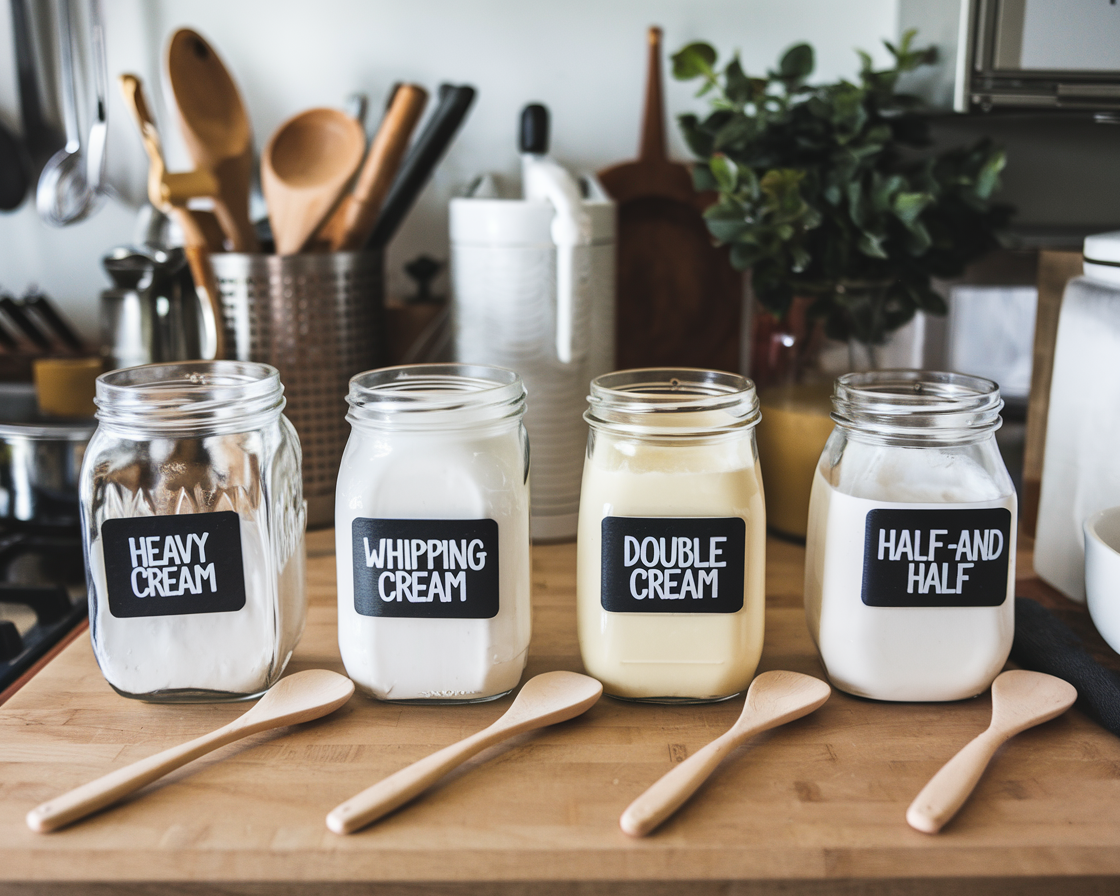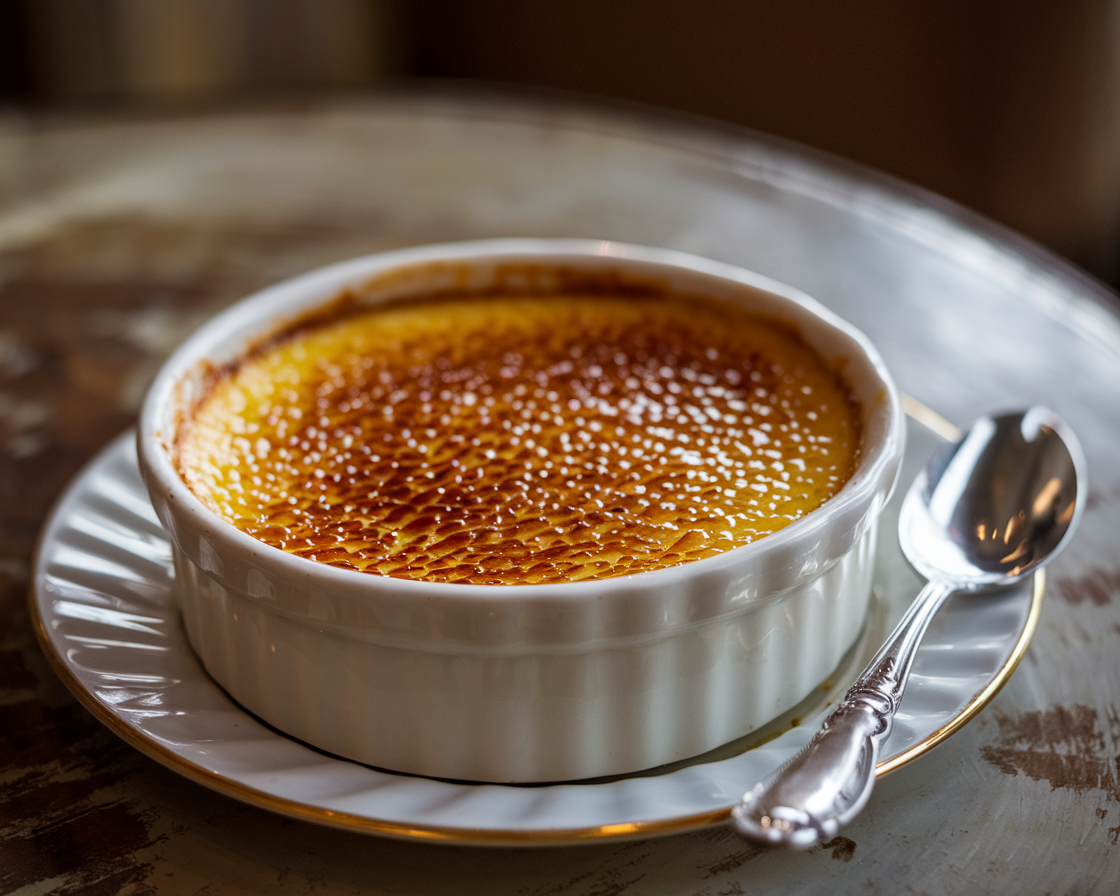When it comes to crème brûlée, that silky, rich custard topped with a crackling caramelized sugar crust, the cream you use can make or break the dessert. Whether you’re a seasoned baker or a newbie trying to impress guests, knowing the best type of cream is essential for nailing that restaurant-quality texture and flavor. Let’s dive into everything you need to know!
Introduction to Crème Brûlée
The Origins and Allure of Crème Brûlée
Crème brûlée isn’t just a fancy French dessert that’s hard to pronounce; it’s a classic that dates back centuries. This timeless dish, whose name means “burnt cream,” has a luscious custard base topped with a crisp layer of caramelized sugar. What’s so magical about it? It’s the contrast—the velvety custard against the crunch of sugar. Whether you’re enjoying it at a chic Parisian café or making it in your own kitchen, crème brûlée always feels like a little luxury on a spoon.
Why Cream is the Star Ingredient
If crème brûlée were a band, cream would definitely be the lead singer. Sure, sugar, eggs, and vanilla play their parts, but cream gives the dessert its signature richness and smooth texture. It’s what transforms a simple custard into an indulgent treat. But not all creams are created equal, and choosing the right one is like picking the perfect paintbrush for a masterpiece.
The Role of Cream in Crème Brûlée
Texture, Flavor, and Balance: The Creamy Foundation
The cream you use determines the texture of your custard. Heavy cream, for example, lends a luxurious thickness, while lighter creams might result in a more delicate texture. The balance of fat in the cream is key—it’s what gives crème brûlée that melt-in-your-mouth feel. It’s almost like Goldilocks: you don’t want it too thick or too thin; it has to be just right.
“Think of cream as the backbone of crème brûlée. Without it, you’re not just missing richness—you’re missing the soul of the dessert.” 🌟
Understanding the Custard Base and How Cream Impacts It
The custard base is a simple mixture of cream, sugar, egg yolks, and flavorings like vanilla. But it’s the cream that carries the flavor and determines how well the custard sets. Use the wrong type, and your crème brûlée might turn into a runny mess—or worse, end up grainy. Nobody wants to serve a dessert that feels like scrambled eggs!
Types of Creams Used in Crème Brûlée
Heavy Cream: The Classic Choice
When in doubt, heavy cream is your best bet. With a fat content of about 36-40%, it’s rich, thick, and provides that perfect silky texture. It’s the go-to choice for most traditional recipes, and honestly, it’s hard to go wrong with it.
Why Choose Heavy Cream?
- Ideal for a creamy, dense custard.
- Creates a smooth and luxurious texture.
- Adds richness without overpowering the other ingredients.
Nutrition Facts for Heavy Cream (per 1 cup):
| Nutrient | Amount |
|---|---|
| Calories | 820 kcal |
| Fat | 88 g |
| Saturated Fat | 55 g |
| Protein | 5 g |
| Carbohydrates | 7 g |

Whipping Cream: Is It a Good Alternative?
Whipping cream has a slightly lower fat content (30-35%) than heavy cream. While it can work in a pinch, it doesn’t quite deliver the same richness. You might notice a lighter texture, which some people prefer, but it’s less indulgent than its heavier cousin.
H3 Double Cream: A Luxurious Option
If you’re looking to wow your guests, double cream is an ultra-rich choice with a fat content of around 48%. It’s thicker than heavy cream and offers an extra indulgent mouthfeel. But be warned: it can make the custard overly dense if not balanced properly.
“Double cream is like the Rolls Royce of creams—luxurious and rich, but you need to handle it carefully to get the best results.” 🚗
Half-and-Half: When to Consider It
Half-and-half is a mix of cream and milk with a fat content of about 10-12%. While it’s lighter and less caloric, it’s not ideal for crème brûlée. The lower fat content can lead to a watery custard that lacks the creaminess this dessert is known for.
Pro Tip: If you’re counting calories, it’s better to make a smaller portion with heavy cream than to compromise with half-and-half.
Factors to Consider When Choosing Cream
Fat Content and Its Impact on Texture
The fat content of the cream you choose plays a significant role in the final texture of your crème brûlée. Higher fat creams like heavy cream or double cream create a richer, thicker custard, while lower fat options might result in a lighter—but less decadent—dessert. If you’re aiming for that silky, melt-in-your-mouth texture, go for a cream with at least 36% fat.
“Fat isn’t just a flavor carrier; it’s a texture builder. The higher the fat content, the smoother your custard will be.” 🍮
But beware! Using cream with too much fat (like double cream) can make your custard overly dense, bordering on greasy. Balance is key.
Freshness and Quality: Does It Matter?
Absolutely. The quality and freshness of your cream can make or break your crème brûlée. Stale or low-quality cream might have off-flavors that ruin the delicate balance of the dessert. Always check the expiration date and aim for organic or locally sourced cream if possible. Fresh cream enhances both the flavor and texture, making your dessert shine.
Local vs. Store-Bought: What’s Better?
Local cream from a dairy farm can offer unparalleled freshness and flavor, but it’s not always accessible. Store-bought cream works perfectly fine as long as you choose a reputable brand and check the ingredients. Avoid creams with added stabilizers or thickeners, as they can alter the texture of your custard.
Quick Tip: If you can’t find fresh cream, opt for a brand labeled “pure cream” or “heavy cream” without additives.
Common Problems When Using Cream for Crème Brûlée
Curdling or Splitting: Causes and Fixes
Curdling is a common issue when preparing crème brûlée. This happens when the eggs in the custard mixture cook too quickly, causing them to separate. It’s like scrambling eggs—but in your dessert. Yikes!
Why It Happens:
- Overheating the cream before mixing.
- Baking the custard at too high a temperature.
How to Fix It:
- Gently heat the cream until it’s just warm, not boiling.
- Bake your custard in a water bath to regulate the temperature. Think of it as giving your dessert a spa day. 🛁
Overly Thin or Runny Custard: What Went Wrong?
A runny custard is the opposite of what you want in crème brûlée. This usually happens when:
- You use cream with a low-fat content.
- The custard mixture isn’t cooked long enough.
Solution:
- Stick to heavy cream for a richer texture.
- Bake until the custard is set but still jiggly in the center, like a firm but wobbly jelly.
Grainy Texture: How to Avoid It
A grainy texture can ruin your dessert, making it feel more like sandpaper than silk. This typically happens when the sugar isn’t fully dissolved or when the custard overcooks.
Prevent It By:
- Whisking the sugar and egg yolks together until smooth before adding the cream.
- Baking at a low, consistent temperature.
“Patience is your best friend when making crème brûlée. Low and slow wins the race!” 🐢
Expert Tips for Choosing and Using Cream
The Ideal Ratio of Cream to Other Ingredients
Balancing your ingredients is crucial. A standard ratio for crème brûlée is:
- 2 cups of cream
- 5 egg yolks
- 1/2 cup of sugar
This ratio ensures a creamy, rich custard without being too heavy. Too many egg yolks can make the texture dense, while too little sugar can leave it bland.
Best Practices for Preparing the Custard Mixture
When mixing your custard, here are some golden rules:
- Warm the cream gently before adding it to the egg mixture. This helps prevent shocking the eggs, which can lead to curdling.
- Strain the custard mixture through a fine-mesh sieve before pouring it into ramekins. This removes any lumps and ensures a smooth texture.
- Use a water bath for baking. This keeps the custard cooking evenly and prevents overcooking.
Storage and Handling of Cream for Best Results
If you’re not using the cream right away, store it in the coldest part of your fridge and use it within a week of opening. For long-term storage, you can freeze cream, but thaw it gently in the refrigerator to maintain its consistency.
Pro Tip: Never refreeze cream after thawing. It can separate and lose its creamy texture.
Popular Recipes and Variations of Crème Brûlée
Classic Vanilla Crème Brûlée Recipe
The timeless classic vanilla crème brûlée is the gold standard. It’s the perfect starting point if you’re new to making this dessert. Here’s what you need:
Ingredients:
| Ingredient | Quantity |
|---|---|
| Heavy cream | 2 cups |
| Egg yolks | 5 large |
| Granulated sugar | 1/2 cup |
| Vanilla extract | 1 teaspoon |
| Sugar for topping | 2 tablespoons |
Directions:
- Preheat your oven to 325°F (160°C).
- Heat the cream in a saucepan until it’s warm but not boiling.
- Whisk the egg yolks and sugar in a bowl until the mixture is pale and thick.
- Slowly add the warm cream to the egg mixture while whisking continuously.
- Stir in the vanilla extract.
- Strain the mixture and pour it into ramekins.
- Place the ramekins in a baking dish and fill the dish with hot water halfway up the sides of the ramekins.
- Bake for 30-40 minutes or until the custard is set but still jiggly in the center.
- Chill for at least 2 hours. Just before serving, sprinkle sugar on top and caramelize it using a kitchen torch.
“A kitchen torch is like your dessert’s magic wand—turning sugar into golden glass!” 🔥
Modern Twists: Lavender, Matcha, and More
While vanilla is a classic, experimenting with flavors can elevate your crème brûlée game. Here are a few modern twists:
- Lavender Crème Brûlée: Infuse the cream with dried lavender for a floral touch.
- Matcha Crème Brûlée: Add a teaspoon of matcha powder to the custard mixture for a unique green tea flavor.
- Espresso Crème Brûlée: Mix in a shot of espresso for a rich, coffee-infused dessert.
These variations are like adding accessories to a classic outfit—they keep things fresh and exciting! ✨
Vegan Crème Brûlée: Achieving Creamy Perfection Without Dairy
Dairy-free? No problem. You can still enjoy a creamy crème brûlée using plant-based alternatives.
Ingredients for Vegan Crème Brûlée:
| Ingredient | Quantity |
|---|---|
| Coconut cream | 2 cups |
| Plant-based milk | 1/2 cup |
| Cornstarch | 2 tablespoons |
| Sugar | 1/2 cup |
| Vanilla extract | 1 teaspoon |
Steps:
- Combine coconut cream, plant-based milk, sugar, and cornstarch in a saucepan.
- Cook over medium heat until the mixture thickens.
- Pour into ramekins and chill until set.
- Caramelize sugar on top before serving.
“Vegan crème brûlée proves that indulgence isn’t reserved for dairy lovers!” 🌱
Crème brûlée isn’t just about perfecting the custard—it’s also about understanding the interplay of ingredients. For instance, the type of cream you use can dramatically influence texture and flavor, much like how cream cheese elevates the richness in our Cream Cheese Banana Bread with Cinnamon Topping. Similarly, if you’re curious about exploring creative twists, you might enjoy the Crab Brulee Recipe: Luxurious and Easy to Make for a savory take on this classic dessert. And don’t forget, mastering sugar caramelization for that iconic crunchy top can also come in handy when trying recipes like our Crystal Candy Guide.
Conclusion: The Perfect Cream for Perfect Crème Brûlée
H3 Summing Up the Key Takeaways
Choosing the right cream for crème brûlée boils down to understanding the role of fat, texture, and quality. Heavy cream is your safest bet for achieving that rich, silky custard, but don’t shy away from experimenting with alternatives if you’re feeling adventurous.
“At the end of the day, the best cream is the one that fits your taste and dietary needs.” 🥄
Encouragement to Experiment with Different Creams
The beauty of crème brûlée lies in its versatility. Once you’ve mastered the basics, feel free to experiment with different creams, flavors, and techniques. Whether you stick to heavy cream or venture into vegan territory, the key is to have fun and enjoy the process. After all, cooking is an art—and you’re the artist.

